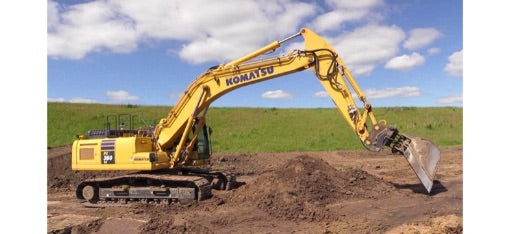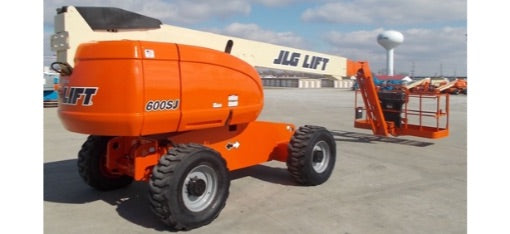When you are investing in construction equipment, selecting the right manufacturer can make a world of difference to your return on capital. Top-quality equipment like Sany will increase your operating efficiency, reduce costs, and streamline the effectiveness of your ongoing projects. However, as in all heavy equipment, problems are bound to crop up and Sany is no exception.
Fortunately, Sany excavator problems can be overcome when you use the Jaltest cutting-edge Sany diagnostic software and maintenance tool. From hydraulics to track tension, from forced regens to transmission, our software ensures that your Sany equipment is always in peak performance mode.
This post will focus on the top 5 excavator problems faced by owners of Sany excavators and how you can get around them, sometimes with a little nudge from our Sany diagnostic tool.
While going into some key problems that might crop up with your Sany excavator and how to resolve them, a quick word on excavators, in general, will be in order.
A Rundown of Sany Excavators
Excavators are among the most common and versatile equipment on any excavation or construction site. Mini excavators additionally have the benefit of having a small footprint and due to their compact swing, can get into small cramped spaces that are beyond the reach of larger machines. Sany manufactures a range of excavators, from small, medium, and large ones. They are perfect for small projects like residential landscaping or large ones like factory building or other massive construction needs.
Like all heavy equipment, Sany excavators need to be maintained properly to get the best out of them and ensure that downtime is a rarity. Critical to it is a well-designed preventive maintenance strategy with the Jaltest Sany excavator troubleshooting tool that will keep your equipment operating safely and effectively. The reason why preventive maintenance is so vital is that it helps you handle any minor issues before they become full-blown problems and put your excavator off the job.
When it comes to any issues with the engines in Sany excavators, the Sany excavator fault codes in our software clear them to get the excavator working again. This is regardless of the engines used in the Sany excavator. Typically, Sany uses the Yanmar engine in their mini excavators, Isuzu in mid-sized excavators, and Cummings in large-scale equipment.
Engines Used in Sany Excavators
Sany uses a variety of engines on their excavators including Kubota, Isuzu, Cummins, and Yanmar.
Kubota: The latest Sany excavators use Kubota engines which are reliable and fuel-efficient. These engines have a four-cylinder water-cooled diesel engine system, turbocharger, and Common Rail direct injection engine (CRDi) technology.
Cummins: Both the Sany SY140C-9S Quarry and the SY215C Crawler excavator use Cummins engines. The smaller excavator Quarry uses a fuel-efficient Cummins engine while the larger Crawler has a Stage V Cummins engine with a 5-year warranty.
Isuzu: While the Quarry also comes with the Isuzu engine, the large Sany excavator SY580C-10HD runs on the 6WGIX Isuzu engine that has high torque and power.
Yanmar: The Yanmar 3TNV80F engine with a power of 14.6 KW is used in the SY18C and SY18U Sany excavators. The Yanmar engine with 29.1/2200 kW/rpm is used in the large 5-ton Sany excavator. Its T4 emission engine has a minimal environmental impact.
Whatever Sany excavator you choose, you will get an engine from a respected manufacturer, one that the Jaltest diagnostic software is designed to handle optimally.
5 Typical Sany Excavator Problems And How To Get Around Them
If you have a fleet of Sany excavators working around the clock, maintenance and faults are bound to crop up. You need troubleshooting software to diagnose them and get dealer-level service at the site itself.
So, let us go through the 5 common Sany excavator maintenance issues and how to resolve them.
1. Over or Under Lubricated Moving Parts
Excavators are complex machines with several moving parts that need to be well-lubricated to perform efficiently. The main ones are as follows.
- The undercarriage pins and bushings need to be greased regularly with one to three shots of grease.
- The slew bearing that helps the cabin to rotate on its chassis should be greased as given in the manual, usually every 50 hours of operation.
- Track rollers and idlers, a critical part of the undercarriage of your excavator should be greased once per week or as per the frequency recommended in the manual.
- Bucket linkages are parts that connect the bucket of the excavator to the boom arm and should be greased daily.
However, you might face problems if you over-grease or under-grease these moving parts. Go through the manual that has detailed diagrams of the various greasing points of your excavator and how much grease should be applied.
Under-greasing
If moving parts of an excavator are not properly greased, it leads to increased friction, consequential breakdown, and increased wear and tear. When this happens, component breakdown can lead to costly repairs. Check the component replacement guide in the Jaltest Sany excavator troubleshooting software.
Over greasing
Over-greasing has its own set of troubles. It attracts dirt and debris to the greasing point and damages the seals. This leads to needless wear and tear on vital components and results in premature failure.
Click here to learn about Sany excavator problems and how to resolve them.
2. Improper track tension
Among the probable Sany excavator problems is improper track tension. Excavator tracks are one of the critical components of the machine and maintaining them in peak condition should be high on your list of priorities. It is the tracks that help an excavator maneuver nimbly over challenging and uneven terrain and hence, maintaining the correct tension keeps the excavator safe and easy to operate.
Regardless of whether it is Sany SY35U problems or of any other Sany model, improper track tension gives rise to a host of maintenance-related issues. Tracks that are very tight put excessive pressure on sprockets, rollers, and idlers, thereby reducing their life cycle. On the other hand, loose tracks can cause the undercarriage to sag and this puts added pressure on the pins and bushings.
To get around this problem, use the Jaltest diagnostic software to adjust the track tension as per the manufacturer’s specifications. It is advisable to check the tension of the tracks before every shift is started. You can also visually check whether the track tension is right or not. Tracks that are stretched taut between rollers and the excavator have difficulties moving because they are too tight. Tracks that sag between rollers are too loose.
3. Final Drive Motor and Engine Problems and Failures
Final drive motor problems
The final drive motor transfers power from the hydraulic motor of the excavator to the tracks. It is responsible for the performance of the machine by increasing torque and carrying out jobs that require a lot of power like digging, trenching, or excavation. You will know that there are Sany excavator problems with the final drive motor when there is reduced power, knocking, leaking oil from the drive motor, or difficulty in turning or maneuvering the machine.
In all these cases, do not press on with the job at hand. Stop immediately and investigate the issue through the Jaltest Sany excavator troubleshooting software. Lack of proper maintenance is a common reason for the failure of the final drive motor. The motor heats up when contaminants such as dirt and debris gather around it. Cleaning the accumulated debris around the drive motor and changing the oil at stipulated intervals solves this issue.
Read more about Sany excavator troubleshooting methods.
Engine problems
A major problem faced by engines in mini excavators (and in all construction equipment using diesel engines) is soot build-up in the diesel particulate filter. This prevents the excavator from performing at peak levels and it can also go into limp mode. Sany excavator warning lights will inform you of this maintenance issue and you can take corrective action through Sany excavator forced regens to clear the soot.
Further, apart from measuring the extent of soot buildup and taking suitable action, our software also measures the pressure and temperature of the exhaust gasses to ensure that all is well with your Sany excavator engine.
4. Hydraulic Systems Failures
At the heart of any excavator is the hydraulic system, providing the power needed for lifting, moving heavy loads, digging, and scraping. Given its complexities, hydraulic system failures can turn out to be frequent occurrences if periodical maintenance is not carried out. The main issues typically associated with hydraulic system failures in excavators are overheating, fluid leaks, and reduced power.
As a preventive issue, the components of the hydraulic system should be checked periodically and any signs of wear or damage should be addressed at the earliest. Chalk out a maintenance strategy that verifies the state of the connectors, cylinders, clamps, fluid levels, hoses, and seals at least once every week. This activity alone reduces a major share of Sany excavator problems.
Click here to check your equipment compatibility with our troubleshooting software.
5. Damage to the undercarriage
Whether it is Sany SY35U problems or any other model of Sany excavators, the undercarriage is an important part that must be maintained optimally if your Sany excavator has to be always on the job without downtime. The undercarriage should be kept clean and free from dirt, frozen mud, debris, and other contaminants that might pile up and lead to several problems. Further, the piled-up debris on the undercarriage weighs down the excavator thereby reducing fuel efficiency and making it harder to maneuver deftly.
All these issues can be prevented by frequently cleaning the undercarriage, more so if the excavator is operating in muddy or icy conditions. If the excavator is regularly on the job, clean the undercarriage after every use. To do so, pressure wash the undercarriage or use a jet nozzle to spray away the dirt and debris.
Do so carefully so that the pressure does not damage any vulnerable components of the undercarriage. Also, avoid using corrosive cleaning agents that might damage rubber products such as seals. This maintenance activity avoids unnecessary service costs and extends the lifecycle of the excavator.
Summing up
Sany excavators are incredible machines that can work in some of the most challenging terrains under the harshest conditions. To keep them performing without a break, constructing, excavating, landscaping, or more, optimized maintenance programs must be frequently undertaken that take care of the specific needs of these machines.
You can carry out comprehensive diagnosis of your excavators and solve all your Sany excavator problems with our Jaltest Sany excavator troubleshooting diagnostic software. You can carry out periodic full system scans or troubleshoot symptoms whenever any issue arises.
Our software has detailed diagrams of most Sany excavator problems so that diagnosis and rectification become very easy. You can undertake various functions such as calibrating transmissions and getting all information about vehicle and maintenance data.
Contact us to learn more about the Jaltest Sany excavator diagnostic troubleshooting software.








































Leave a comment